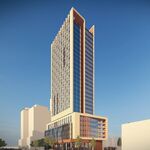Studies ruled out a subway. You are ignoring this.
Like they did for Sheppard east. But they did studied Sheppard West and evaluated all the factors, economic impact, ratio cost-benefit, environmental, etc… It was just ruled out…
The lack of transparency here is evident and it would have served them better to have at least studied the option like they did for Sheppard West and Sheppard East extension to Consumers.
Which will attract the greatest number of riders. For the record, people are complaining that the spacing on the underground portion is too wide.
Says who? You?
If LRT can attract people, what about a subway? Oh, right…they never studied it…
No one is disputing that the LRT won’t attract riders, but C’MON!!!!
It will never draw more than a subway.
Because the time-savings does not justify the added cost. And also, accessibility. Riders want stop close by.
From Ea page 29
Jane: There are many items that will be considered prior to
making a decision about the preferred option, including what is the best
way to connect to the proposed Maintenance and Storage Facility; what
option will provide the best opportunities for future development and
future connection to GO Transit; and which option will provide the best
overall usability by providing well located stops or stations. A decision
about the preferred option will be made prior to Open House 3.
Don Mills: Still under study…
I was pointing out that such busy intersection would be better served if it was underground. Your little theory is not in the EA…too bad
Unnecessary fear mongering. You are trying to justify an expensive investment to avoid an event that may occur once or twice a year. This is the tactic anti-rail activists would use.
You do not get that with subways? How about suicides? Track level incidents?
From the Sheppard-Finch Study case: Page 19
The operational reliability of the route will vary. Even with significant signal priority there will be
delays in road intersections from cross-traffic, congestion and accidents. Experience from similar
tram/LRT systems shows that this delay may be in the order of 10%, which on the proposed route
could provide a variation in runtime of about 4-5 minutes for each segment. This potential
variability in journey time may result in differential headways, which at peak times can increase
the dwell times of vehicles at busy stops and further increase travel time.
The numbers wont be the same for eglinton but that’s the reality of LRT crossing intersection. Are subway perfect? No. Better reliability? absolutely
Most of Pearson arrivals head to Peel Region.
Then what’s the point of building a link to the city then? The French are insane. They have a subway going to the airport. Vancouver? What a waste of money… Let’s be smarter then everybody else and not even bother…
(Shaking my head)
No, you have limited transit knowledge. Do not take it to offense, but you cannot beyond grade-seperated transit, and that can be a problem. It's why we haven't had much transit expansion in this city. The planners had no vision except for subways.
You should go out more…
Again, your lack of experience is binding your judgement. Have you actually ridden a system like Transit City, or are you just assuming based on your established criteria of "rapid transit"?
Have you? I have family in France; visited major European cities…went to Tokyo…whatever man…
I wont bother with you. I can’t stomach people insulting others because they don’t share the same view as they do. You want to believe everything politicians feeds you, that’s your story and I’m not disputing that, but if I want to express how skeptical I am toward this poor planed transit city idea, I will.
They do not have any mental power that I do not possess myself. There is no problem in discussing other alternative and giving our opinion. If it’s a problem for you, you can always go elsewhere. This is a iscussion board…and we discuss and debate in a “MATURE WAYâ€




